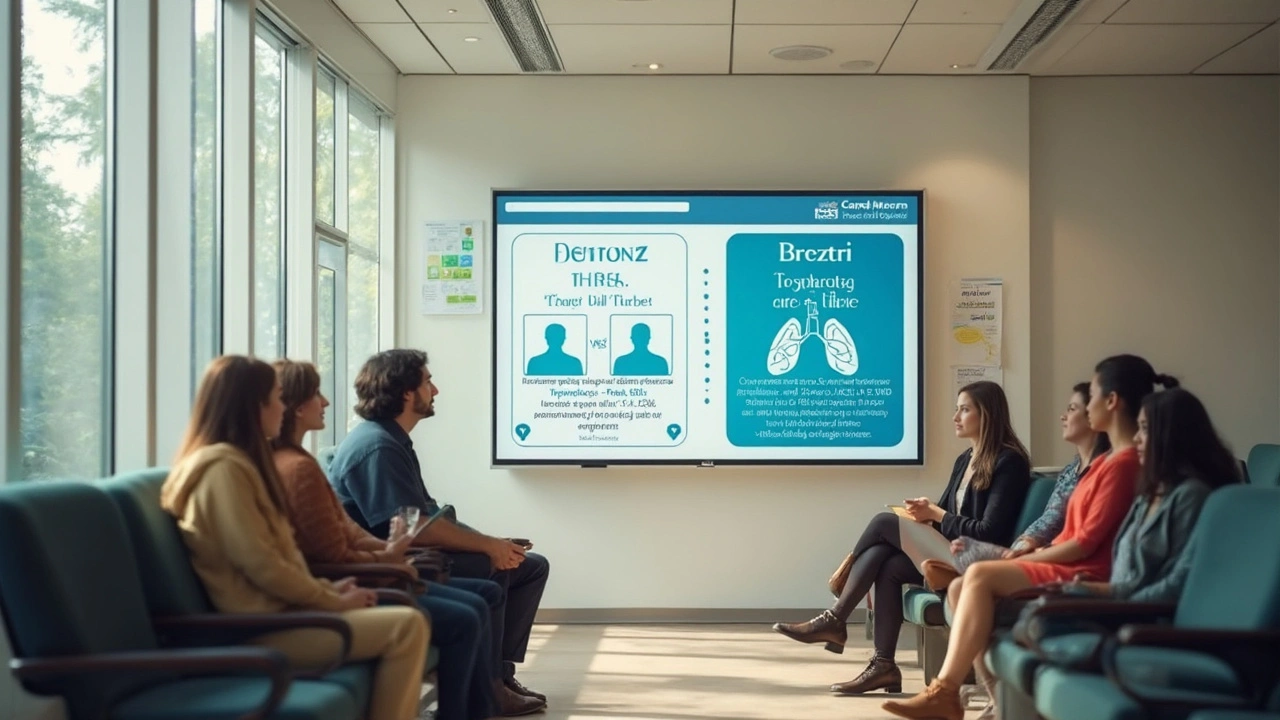COPD triple therapy: what it is and when it helps
Triple therapy for COPD combines three inhaled medicines — an inhaled corticosteroid (ICS), a long-acting beta-agonist (LABA) and a long-acting muscarinic antagonist (LAMA). The goal is to cut flare-ups, ease breathlessness, and keep you active. It’s often offered to people with frequent exacerbations or more advanced symptoms despite using two drugs.
Common single-inhaler options include Trelegy (fluticasone furoate/umeclidinium/vilanterol) and others available as fixed-dose combinations. Doctors may also put you on separate inhalers for each drug class. Discuss which setup fits your routine — one inhaler can be simpler, but separate inhalers let you adjust doses more precisely.
What benefits to expect
Large clinical trials like IMPACT and TRIBUTE found that triple therapy lowers the risk of moderate-to-severe exacerbations more than dual therapy. You may notice fewer bad flare-ups, small but meaningful improvements in lung function, and better quality of life. Results vary — people with high blood eosinophils or a history of frequent exacerbations tend to benefit most from adding an ICS.
Triple therapy is not a quick fix. It’s a maintenance strategy you stick with daily, not a rescue treatment. Keep using your fast-acting rescue inhaler for sudden breathlessness.
Side effects and safety tips
Adding an inhaled steroid raises the small risk of pneumonia in some people, especially older adults and those with advanced COPD. Watch for increased cough, fever, or mucus change and call your provider if symptoms appear. Other possible effects: oral thrush (rinse your mouth after using an ICS), dry mouth from LAMA, and heart palpitations from LABA in sensitive people.
Practical tips: learn the exact inhaler technique for your device — wrong technique cuts effectiveness. If you use an ICS, rinse and spit after dosing. Take your maintenance inhaler every day even when you feel OK. Bring all your inhalers to clinic visits so your clinician can check technique and simplify your regimen if possible.
Don’t stop smoking. Smoking reduces how well inhaled meds work. Keep up vaccines (flu, COVID, pneumococcal) and consider pulmonary rehab, which boosts exercise tolerance and breath control while you’re on medications.
When to see your doctor: more than one exacerbation a year, worsening breathlessness, or side effects you can’t tolerate are reasons to review therapy. Your clinician may adjust doses, switch inhaler types, or step down the ICS if you remain stable for months and your exacerbation risk is low.
Your doctor may check blood eosinophil counts to predict who benefits from the steroid piece — higher counts often mean better response to ICS. Expect follow-up at 4–12 weeks after a change and then periodically to track symptoms, inhaler use and side effects. If you have repeated pneumonia or low eosinophils, clinicians might try removing the ICS while monitoring closely. Always ask about drug interactions, especially if you’re on multiple heart or antibiotic medicines.
Keep a written action plan for exacerbations and carry it.
If you want, explore our site for in-depth articles on specific triple inhalers, inhaler technique videos, and safe shopping tips for COPD medicines. Managing COPD is a team effort — right meds, good technique, and lifestyle steps make treatments work better.

